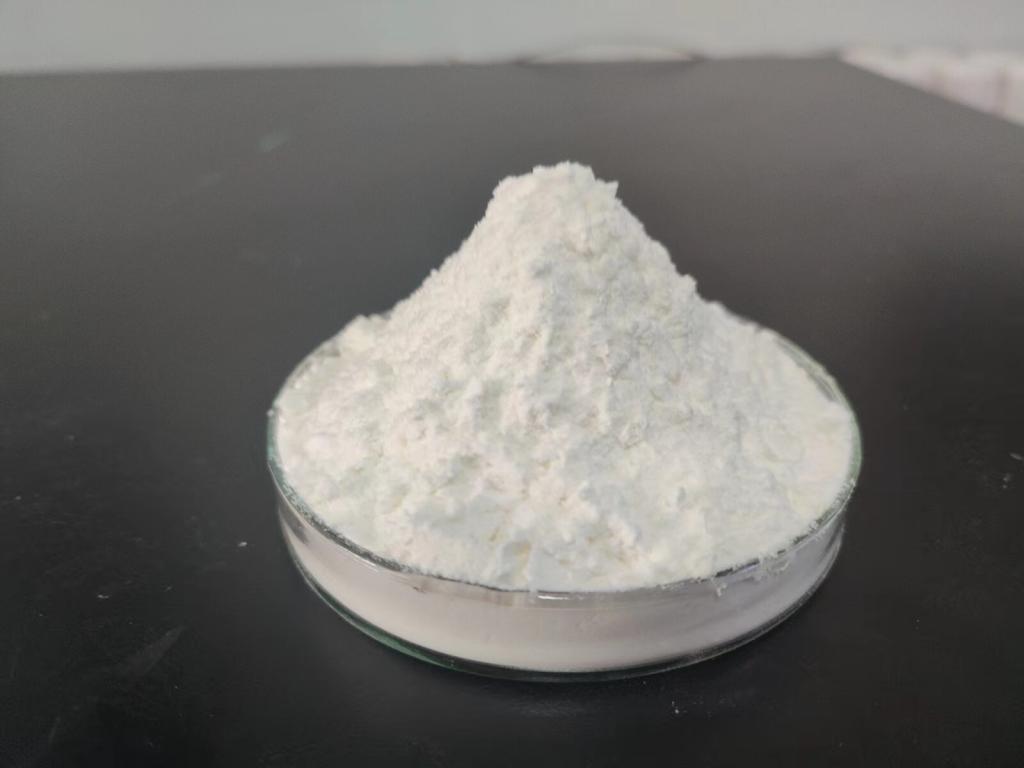Tel:0086 18231198596

News
ε-Polylysine Hydrochloride's Potential in Collaborations with Emerging Food Technologies.
TIME:2023-09-28
I. Understanding ε-Polylysine Hydrochloride
Introduction to ε-Polylysine
ε-Polylysine is a natural antimicrobial compound produced by the fermentation of Streptomyces albulus. It has been used in various food applications for decades and is recognized as a safe and effective preservative.
Mechanism of Action
ε-Polylysine hydrochloride works by disrupting the cell membranes of a wide range of microorganisms, including bacteria, molds, and yeasts. This mode of action effectively inhibits their growth and proliferation.
Key Properties
Heat Stability: ε-Polylysine hydrochloride remains effective even at high temperatures, making it suitable for various food processing methods.
Water Solubility: It is highly soluble in water, allowing for easy incorporation into food products.
Minimal Impact on Sensory Properties: ε-Polylysine hydrochloride has a limited impact on the taste, texture, and appearance of food, making it an attractive option for preserving food quality.
II. Collaborations with Emerging Food Technologies
High-Pressure Processing (HPP)
High-Pressure Processing (HPP) is a non-thermal food preservation technique that uses hydrostatic pressure to inactivate microorganisms and enzymes. ε-Polylysine hydrochloride can collaborate with HPP to enhance food safety and quality by further inhibiting microbial growth. Together, they offer a comprehensive approach to extend the shelf life of products while preserving sensory attributes.
Nanotechnology
Nanotechnology enables the development of nanoscale delivery systems for antimicrobial agents like ε-polylysine hydrochloride. These nanocarriers can protect and release ε-polylysine hydrochloride gradually, increasing its efficiency in controlling microbial growth in food products and ensuring its uniform distribution.
Biopackaging
Biopackaging, which utilizes edible and biodegradable films and coatings, is gaining momentum as a sustainable approach to food preservation. ε-Polylysine hydrochloride can be incorporated into these biopackaging materials, providing an additional layer of antimicrobial protection and contributing to extended product shelf life.
Advanced Sensing Technologies
Advanced sensing technologies, such as smart labels and RFID (Radio-Frequency Identification), can monitor various parameters in real-time, including temperature, humidity, and gas composition. Collaboration with ε-polylysine hydrochloride allows these technologies to respond dynamically by releasing antimicrobial agents when necessary, ensuring food safety and quality.
Precision Agriculture
In precision agriculture, data-driven techniques optimize crop production. ε-Polylysine hydrochloride can be employed to protect harvested crops from microbial spoilage during storage and transportation, contributing to reduced food waste and increased sustainability.
III. Applications and Benefits
Meat and Poultry
In the meat and poultry industry, ε-polylysine hydrochloride can collaborate with emerging technologies to extend the shelf life of products and reduce microbial contamination. Biopackaging and advanced sensing technologies can help maintain freshness, while nanotechnology can ensure controlled release of ε-polylysine hydrochloride for enhanced safety.
Dairy Products
Collaboration with nanotechnology allows ε-polylysine hydrochloride to be encapsulated and released gradually in dairy products like yogurt and cheese. This partnership preserves product quality, inhibits spoilage, and extends shelf life.
Beverages
Nanotechnology can be used to incorporate ε-polylysine hydrochloride into beverage packaging materials, providing an additional layer of protection against spoilage microorganisms. Smart labels and sensors can monitor beverage quality throughout distribution.
Fresh Produce
Biopackaging with ε-polylysine hydrochloride can be employed to extend the shelf life of fresh produce. Nanocarriers can release ε-polylysine hydrochloride to inhibit the growth of pathogens, ensuring the safety of fruits and vegetables.
IV. Challenges and Considerations
While the collaboration between ε-polylysine hydrochloride and emerging food technologies holds immense potential, several challenges and considerations must be addressed:
Regulatory Approval
The use of ε-polylysine hydrochloride in collaboration with emerging technologies may require regulatory approval in some regions. Efforts should be made to streamline the regulatory process and ensure compliance.
Cost and Accessibility
The cost of incorporating ε-polylysine hydrochloride in emerging technologies must be balanced with the benefits it provides. Accessibility and affordability are key considerations for widespread adoption.
Consumer Perception
Transparent labeling and communication regarding the use of ε-polylysine hydrochloride in collaboration with emerging technologies are essential to build consumer trust and acceptance.
Research and Development
Continued research is needed to optimize the integration of ε-polylysine hydrochloride with emerging technologies for specific food products and processing conditions. Collaborative research efforts should explore innovative applications and delivery systems.
V. Future Prospects and Recommendations
The collaboration between ε-polylysine hydrochloride and emerging food technologies offers exciting prospects for the food industry. To fully realize this potential, the following recommendations should be considered:
Regulatory Support: Collaborate with regulatory authorities to establish clear guidelines and approvals for the use of ε-polylysine hydrochloride in collaboration with emerging technologies.
Research and Development: Invest in research to optimize the integration of ε-polylysine hydrochloride with emerging technologies, ensuring their effectiveness and safety.
Industry Adoption: Encourage food manufacturers to embrace these collaborative approaches and invest in innovative solutions to enhance food safety and quality.
Consumer Engagement: Launch educational campaigns to inform consumers about the benefits of these collaborations in ensuring food authenticity and safety.
Conclusion
Emerging food technologies hold the promise of revolutionizing the food industry by addressing critical challenges related to food safety, quality, and sustainability. ε-Polylysine hydrochloride, with its antimicrobial properties and safety profile, is well-positioned to collaborate with these innovations to extend the shelf life of products, reduce food waste, and enhance overall food quality. With regulatory support, industry adoption, and consumer engagement, the synergy between ε-polylysine hydrochloride and emerging food technologies has the potential to contribute significantly to a safer, more sustainable, and higher-quality global food supply.

 CONTACT
CONTACT




